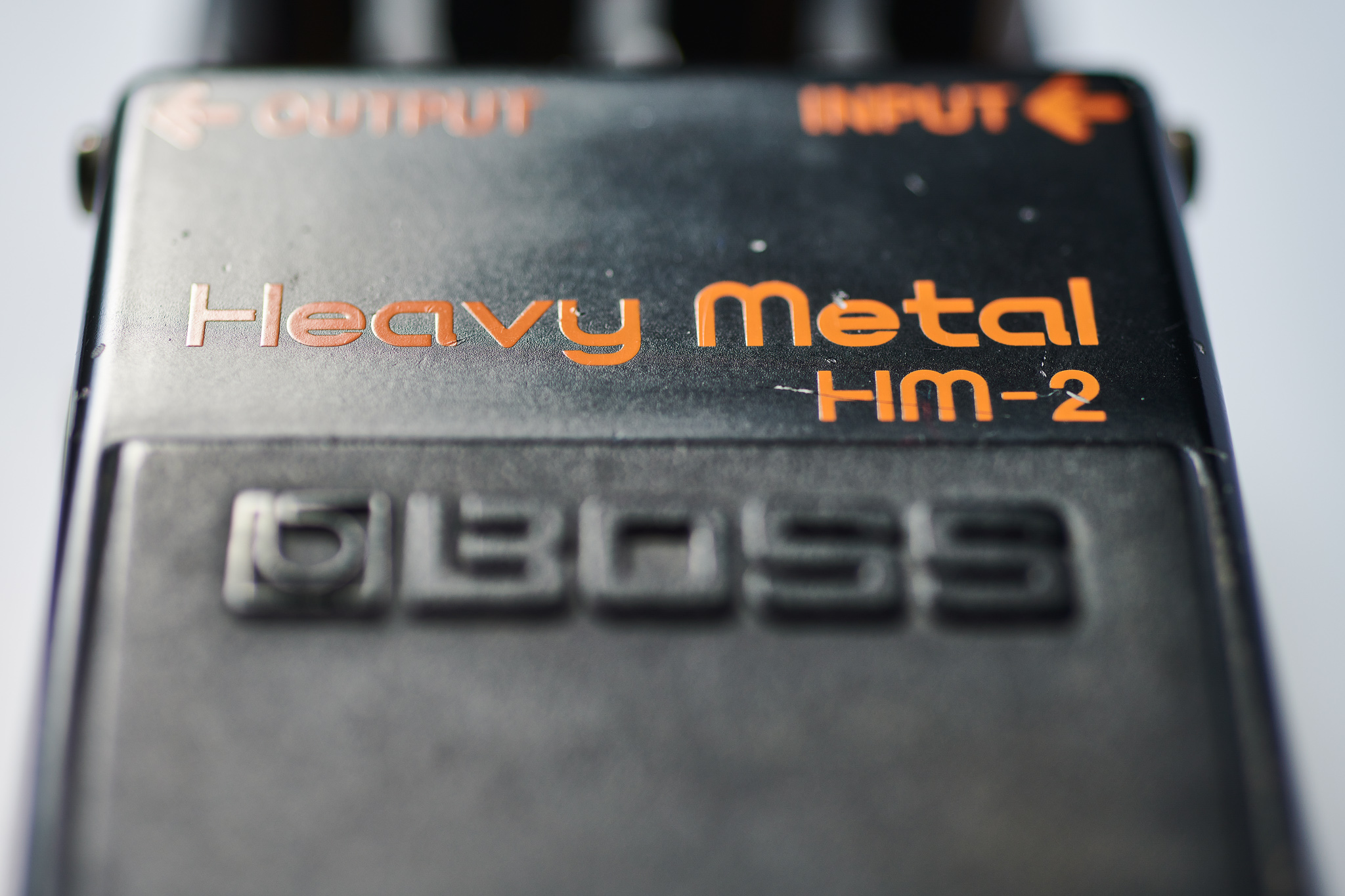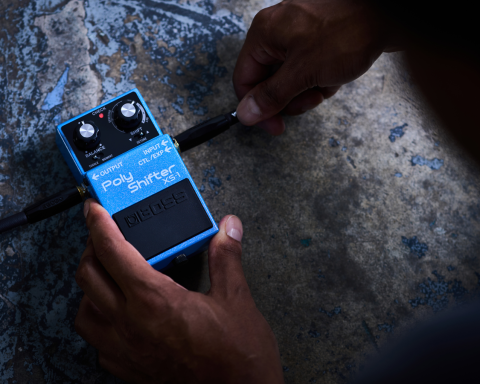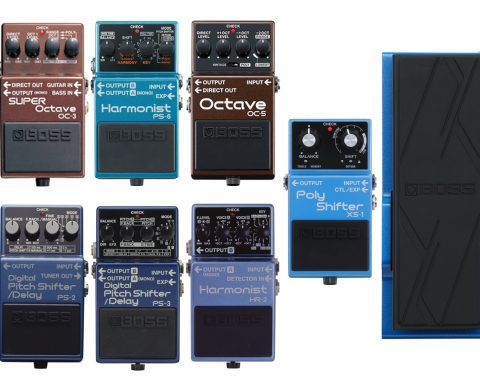Few pedals command the historic respect from the global extreme music community as the BOSS HM-2. Boasting the perfect name and pedigree, the Heavy Metal pedal continues to earn converts with its brutal blast. 30 years on from its discontinuation in 1992, and as it’s immortalized as the Waza Craft HM-2W, we reveal the inside story of the genre-defining distortion pedal at the dark heart of Swedish death metal.

Tomas Skogsberg: Doctor Midrange Speaks
“BOSS is rereleasing the HM-2? That’s really cool. It’s the king of pedals for me,” asserts legendary Swedish producer and father of the “Sunlight Sound,” Tomas Skogsberg. The founder of Sunlight Studios—home to the infamous buzzsaw guitar tone—has taken a break from his busy recording schedule to discuss one of Sweden’s greatest exports: death metal.
“I’m a producer, and sometimes they call me Doctor Midrange,” laughs Skogsberg. Despite his role in helming heavy records, he insists it’s a group effort. “All the projects are about teamwork. We would never have had this great guitar sound without the Entombed guitarists, Uffe Cederlund and Alex Hellid.”
Skogsberg has incredible respect for both members of the band’s six-string duo. “The guitarist makes it sound good; they have it in their fingers. It was a new thing, the Swedish sound, but I still use the same HM-2 I’ve had since the ’90s. I’ve recorded hundreds of bands with it.”
Indeed, myriad bands have passed through its doors since Skogsberg set up Sunlight Studios in the early ’80s. A far cry from its inner-city Stockholm roots, Sunlight is now located roughly an hour’s drive from the Swedish capital in an altogether brighter and more tranquil rural location.
Sunlight Sound, Brutal Tones
Along with the studio’s name, the spot belies its reputation for producing some of the darkest and most brutal-sounding guitar tones in music history. Sunlight’s connection with the rise of Swedish death metal (SDM) dates back to the late ’80s. At that time, young, aspiring death metallers Nihilist—the precursor band of SDM trailblazers Entombed—called upon Skogsberg’s services to record their second demo cassette tape, 1989’s Only Shreds Remain.
It was during these formative recording sessions when the genre-defining potential of the HM-2 Heavy Metal was revealed. “For me, the start of death metal and death ‘n’ roll was when [Nihilist guitarist/bassist] Leif Cuzner brought his HM-2 into the studio,” remembers Skogsberg. “I’d tried different kinds of pedals before, but the HM-2 was really the start of it.”
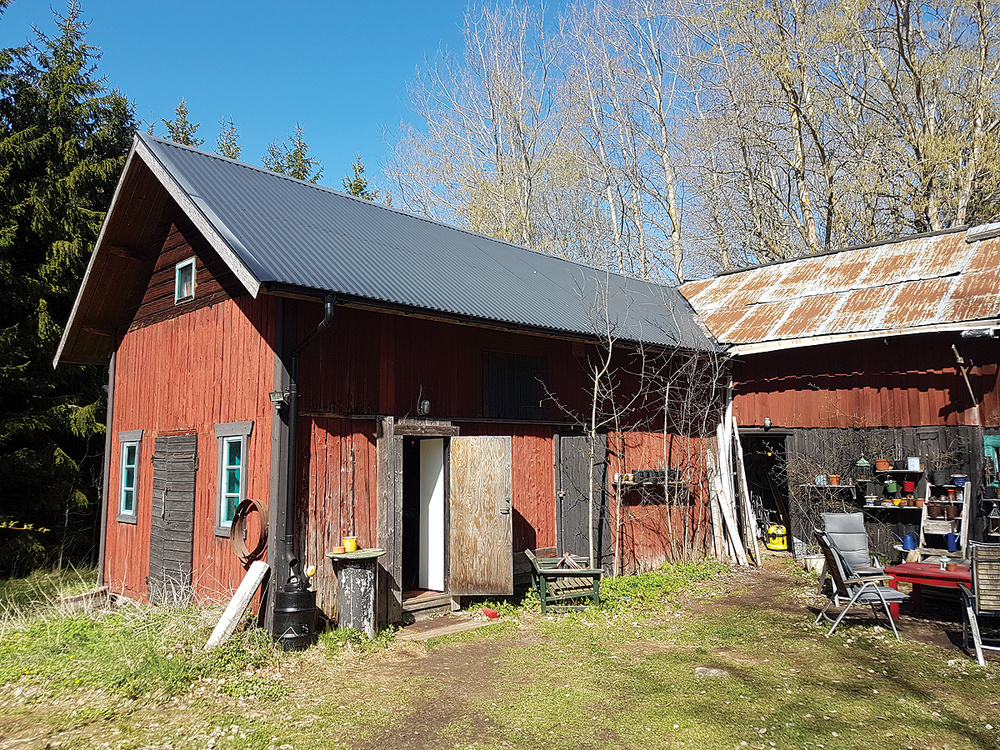
“I’d tried different kinds of pedals before, but the HM-2 was really the start of it."
- Tomas Skogsberg

Limitations Create Innovations
“I was very impressed by the HM-2 at that time,” he continues. “It was a new thing for me, and it was a nice piece of equipment to experiment with.” As with many early recordings, limitations gave the sessions their unique flavor. “In the beginning, the gear was very simple. We used what we had. I think it’s cool to do that,” Skogsberg explains. “I’d always recorded punk rock and that kind of music before, and I still use much of the same equipment I used back then because I know how it works.”
Skogsberg isn’t tight-lipped about how they came upon such an influential sound. “The sound we got was because of the HM-2 pedal, the Peavey combo amplifier (which we miked up with an Audio-Technica ATM41), and the desk, which had a bit more electricity going into it than it’s supposed to.”
He confirms that the triumvirate was a magic combination. “These things together are like a marriage. The attack of the sound was also about compression. We used a GC2020 rackmount stereo compressor. People call it the ‘buzzsaw’ sound, but to me, it sounds like a big truck,” he laughs. “I like to tune down so it’s a little bit evil sounding.”
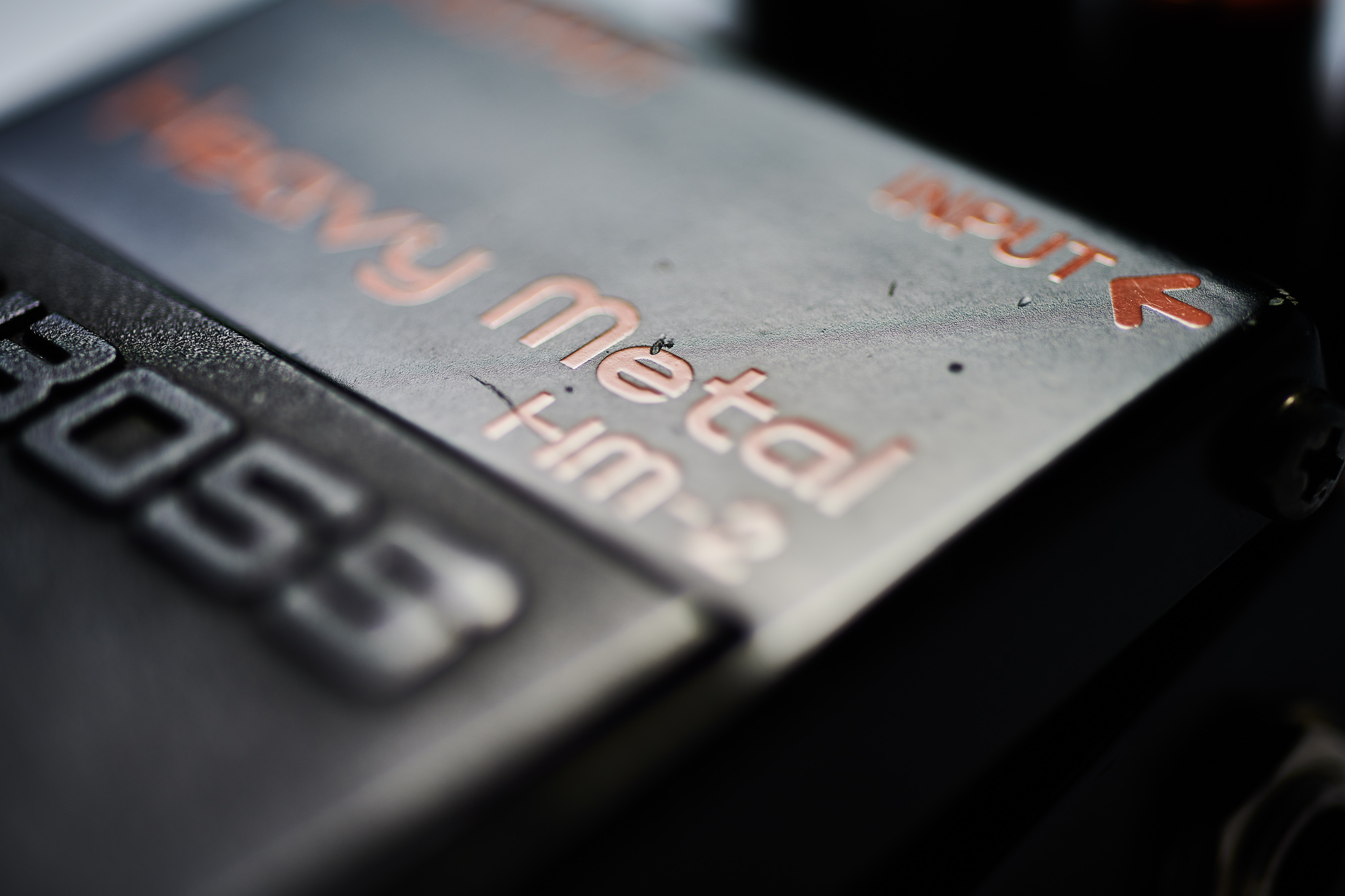
The Path of Entombed
Although the band broke new sonic ground in the studio, the departure of bassist Johnny Hedlund and his subsequent formation of “big four” SDM band Unleashed signaled the end of Nihilist. Founding members drummer/multi-instrumentalist Nicke Andersson and guitarist Alex Hellid, along with guitarist Uffe Cederlund and vocalist Lars-Göran Petrov, promptly reformed as Entombed.
Quickly, the band checked back into Sunlight Studios during December 1989 to record its landmark debut LP, 1990’s Left Hand Path. The sessions revisited their earlier successes tracking with the HM-2. The result is a definitive example of the Sunlight sound, ultimately establishing its seat in the pantheon of SDM classics.
As Entombed’s sound evolved over the following years, the trusty HM-2 remained a go-to. “Entombed changed a little bit from year to year,” says Skogsberg. “Around ’89/’90, my studio was just a room with cheap equipment. By the time we did the second album [1991’s Clandestine] the band had more experience, and the music sounded a little bit more flowing and less grindcore.”
In fact, after the first two releases, the band dropped a ground-breaking collection. “The third album, Wolverine Blues, from ’93 was more rock ‘n’ roll. It was cool. That’s one of the albums I’m most happy with.” While it was a significant shift in approach, the pedal remained the same. “People call that music death ‘n’ roll. We were still using the HM-2. We changed the amplifier to a Marshall, but it still has the HM-2 sound.”
"The HM-2 has remained consistent throughout everything Dismember has done—it’s a signature sound."
-David Blomqvist


The SDM Big Four
According to Skogsberg, Stockholm’s music scene in the early ’90s was a fiercely independent and close-knit community of like-minded individuals sustained by a lifeblood of demo cassettes and fanzines. Among those bands most prevalent in Stockholm at the time were the “Big Four,” namely Unleashed, Entombed, Grave, and Dismember. The latter three all passed through Sunlight Studios early on in their careers. “I didn’t work with Unleashed, but as well as the Entombed stuff I did the first four Dismember albums and the earlier Grave albums,” underlines Skogsberg.
“Nihilist were the first to record at Sunlight and it just went on from there,” Dismember guitarist David Blomqvist recalls. “Of course, we heard the tape and thought, ‘This sounds really good.’ So, Dismember wanted to record there as well.” Their admiration went further. “We said, ‘We’ve got to buy that HM-2 pedal too,’ and then this whole trend started. The HM-2 has remained consistent throughout everything Dismember has done—it’s like a signature sound.”

A Consistent Companion
The BOSS pedal remains a mainstay for Dismember. “We’ve had the HM-2 at every rehearsal and every gig and on every record. The amp we used for the first album [1991’s Like an Everflowing Stream], was Nicke Andersson’s Peavey Studio Pro 40 combo we borrowed.”
Blomqvist stresses that the HM-2 makes the sounds more than a particular amplifier. “You don’t need to be so fussy about which amp you’re using with an HM-2. You could plug it into a toaster, and it’d still sound like an HM-2. They’re incredibly consistent sounding.”
Blomqvist goes on to shed some light on a less-heralded aspect of the pedal: its versatility. “The thing with the HM-2 is you can get millions of sounds, but we set every knob on it to maximum. That is our sound. I think the Dismember album that captures that best is our fourth one – Death Metal [1997]. Also, on the song Pieces from the EP [Pieces, 1992] you can hear a really brutal sound from the HM-2. That’s a definitive HM-2 moment.”
"There have been tons of pedals over the years, but the HM-2 is a go-to that is still usable. It’s like a Holy Grail thing."
-Niclas Engelin
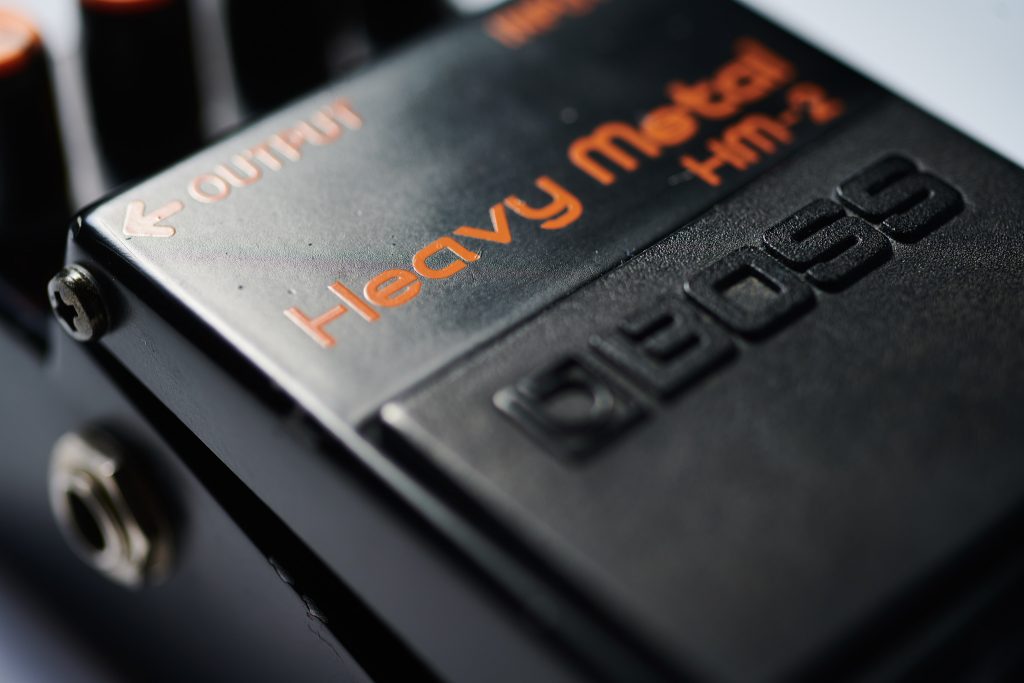
West Coast Sound
Meanwhile, on Sweden’s west coast in Gothenburg, an entirely different style of SDM was taking shape. Much like the Stockholm scene, Gothenburg’s melodic death metal scene—including its pioneers In Flames, At The Gates, and Dark Tranquillity—was informed by Florida’s early death metal movement comprised of bands such as Morbid Angel, Obituary, and Death. However, the archetypal Gothenburg sound differed by fusing death metal with more melodic heavy metal sensibilities.
Still, for many of the guitarists in this community of bands, the HM-2 similarly played a part in establishing their sound. “I think the HM-2 is fantastic. I’m still using it and it’s still popular,” enthuses In Flames guitarist Niclas Engelin. “There have been tons of pedals over the years, but the HM-2 is a go-to that is still usable. That’s rare. It’s like a Holy Grail thing.”
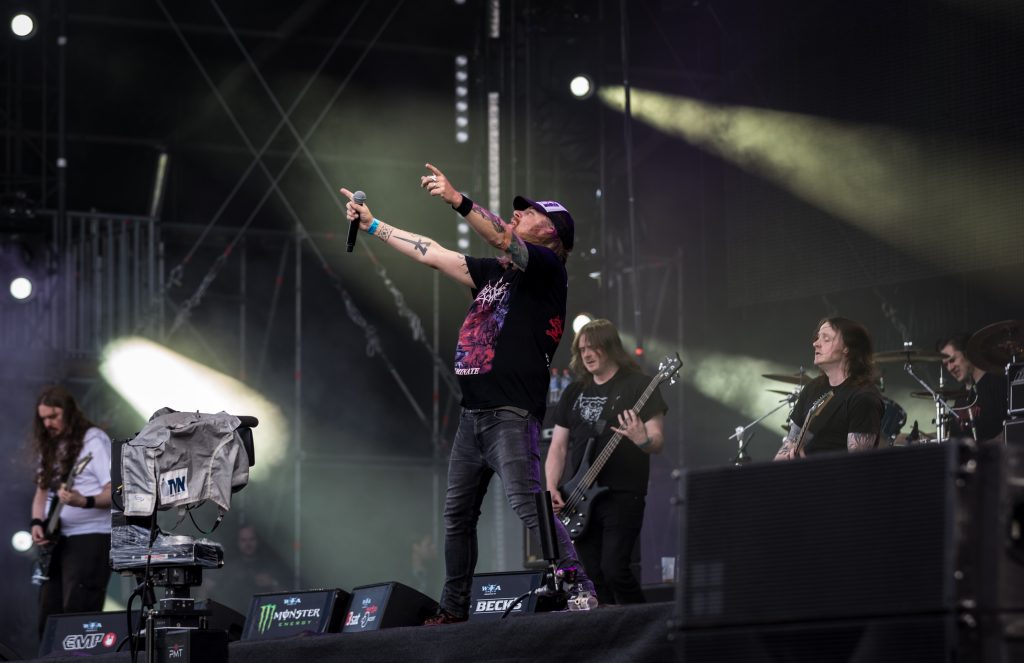
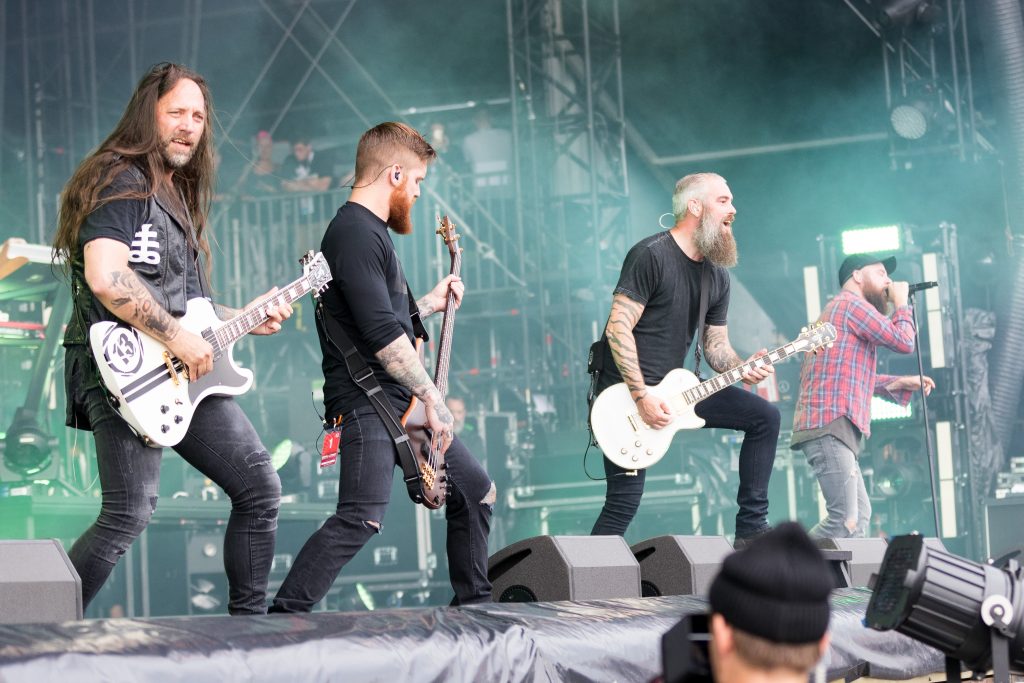
"They brought me to their rehearsal room like a mascot and introduced me to the HM-2." -Niclas Engelin

Gift That Keeps Giving Gain
Engelin has rich memories of that era and discovering the pedal. “I was really blessed. I came from the suburbs of Gothenburg and when I was growing up, I had the opportunity to hang out with the older crowd from the same area. They brought me along to their rehearsal room like a mascot. That was when I was introduced to my first pedal, the HM-2. They showed me how to use it—how to steer it.”
He received a gift from a member of the local metal crew. “One of those guys ended up giving me his. I was just happy making noise. I remember hearing Left Hand Path for the first time in 1990. It was a massive sound. I kind of recognized it, and then I later learned they used the HM-2, which I was already familiar with, of course.”
For Engelin, his scene elders paved the way. “I had so much respect for Dismember and Entombed because that was their sound—their identity. But I wanted a sound and identity of my own. So, I tended to use the HM-2 almost like an overdrive.”

Tom Dalgety: Opeth, Ghost, and the Pixies
Tom Dalgety, producer for Swedish metal giants Opeth and Ghost, fell hard for the black and orange stompbox. “I got into HM-2s because I love the scooped, guttural Entombed guitar tone, particularly on Wolverine Blues,” Dalgety shares. “It’s really mangled up but still very focused and tight. I love that weird, grinding sound—it’s amazing.”
Like others, a dive into Entombed’s gear preferences confirmed his instincts. “When I found out what they were using on Left Hand Path it wasn’t a surprise. Something as sluggish as a 100-watt valve head is never going to give you that instant attack.” So, what’s his unique formula for brutal tones? “It’s about the dynamic response you get from the HM-2 and a little solid-state combo. I got my HM-2 for the Therapy? album, Disquiet. But it turned out they already had loads of HM-2s because the bass player, Michael McKeegan, collects them.”

"It goes from a touch of hazy distortion to a deranged bit-crushed crazy thing.
The EQ can be very extreme, but also very useful." - Tom Dalgety

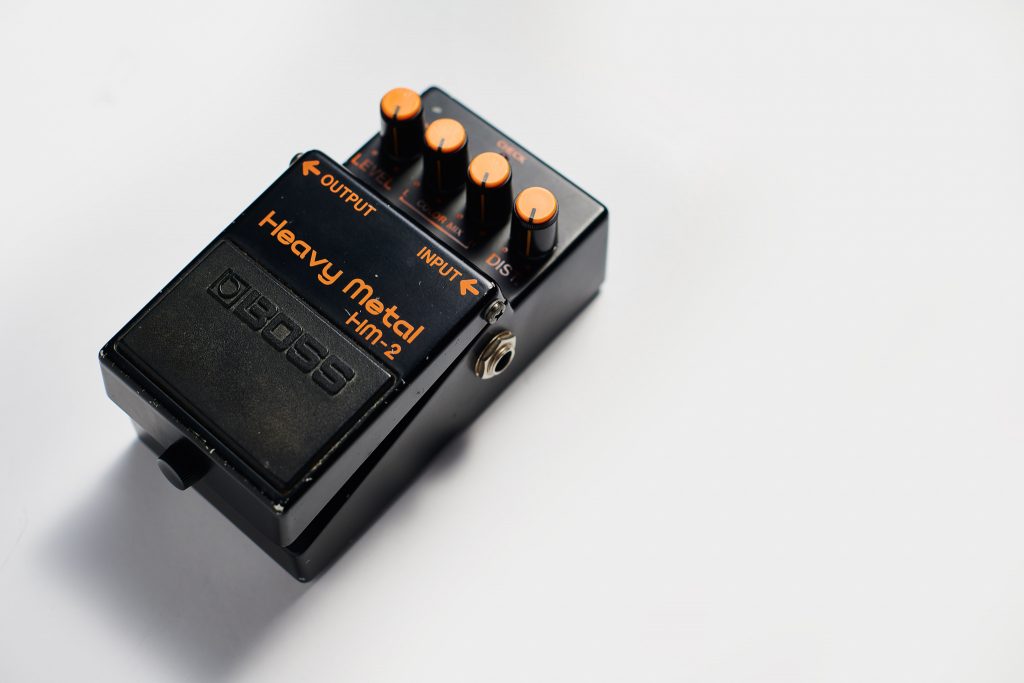
Alternative Methods
As a producer and gear junkie, Dalgety is no stranger to stompboxes. “I use a lot of BOSS pedals, but the HM-2 does something nothing else does,” he says. “It goes from a touch of hazy distortion to a deranged bit-crushed crazy thing. I love it. The EQ can be very extreme, but also very useful. Color Mix L is focused around a guitar’s lowest notes. Turning up Color Mix H is like putting a spike in the signal around 1kHz. This can work well for sparkling up a big valve amp like an old Marshall Plexi.”
Dalgety details the specifics. “It’s essentially a very cool way of hot-rodding a sluggish valve amp where you can boost a huge amount of the upper end. When I want a tight, chugging guitar sound, the HM-2 can be handy.” The classic scoop works on other instruments as well. “Aside from boosting the EQ controls, that metal-friendly scoop is also great on bass for dipping out 200Hz boominess. I like to use the HM-2 when DI-ing bass. It adds a cool rasp and a sort of Stranglers sound—bitey, but not oversaturated and blown out.”
Metal is not the only genre where Dalgety finds uses for the pedal. “I remember using the HM-2 in Studio 3 at RAK while doing the Head Carrier album with Pixies. The track Baal’s Back has a particularly nice, filthy bass sound from the HM-2. I even use the HM-2 on drum tracks for adding distortion to a room mic or maybe a PZM on the floor.”
"The Pixies track 'Baal's Back' has a particularly nice filthy bass sound from the HM-2." -Tom Dalgety
The New Disciples
To this day, the insane versatility, matchless sound, and iconic status of the HM-2 make it one of the most sought-after pedals in the world of hard rock and metal. “I was a huge Entombed fan. And I always wondered how it was possible to get that guitar sound,” guitarist Jimmy Chang of SECT shares. “It was a big part of their sound and identity as a band, and later helped to define that Swedish death metal sound. I remember it was a mystery to me.” It made a massive impact on Chang. “Their tone had such a huge low-end and this raw crunch and fuzz. It wasn’t like anything else I’d ever heard.”
Bandmate and fellow guitarist Scott Crouse points out that SECT was moving in a different direction. “We wanted SECT to be very different from our past endeavors and using the HM-2 was key to that,” Crouse explains. “It offered a more aggressive wall of sound versus the tight modern metal tones we were known for. Some riffs only sound good through the HM-2 and it definitely inspires me to write differently when I’m using one.”

"The HM-2 knows exactly what it is. This is its true victory. The sound of the HM-2 will never go out of style.”
-Mike Schleibaum
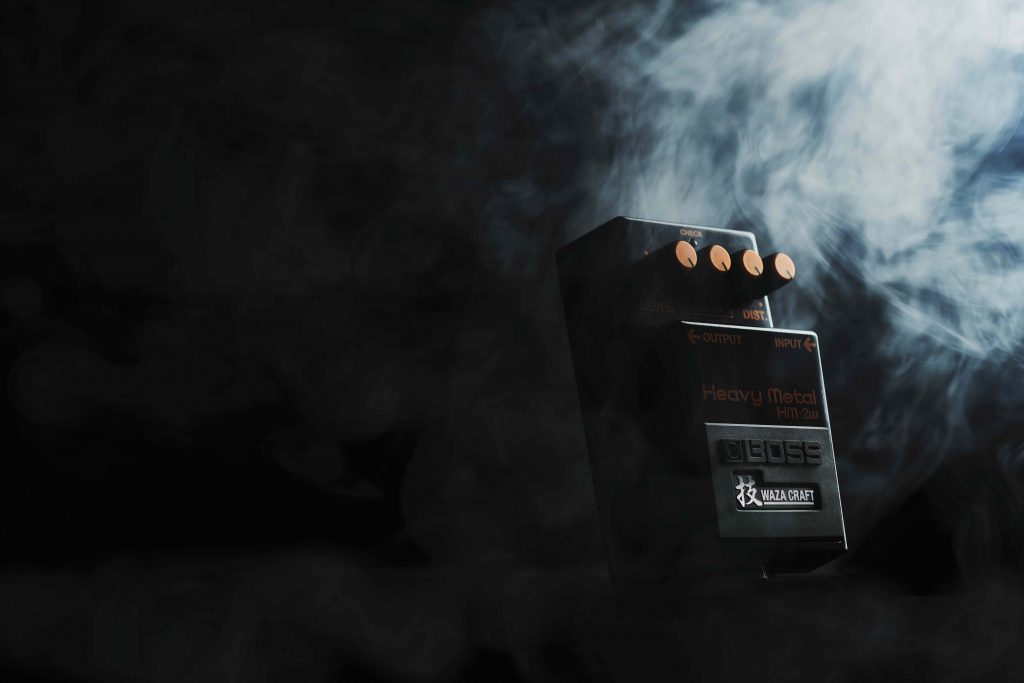
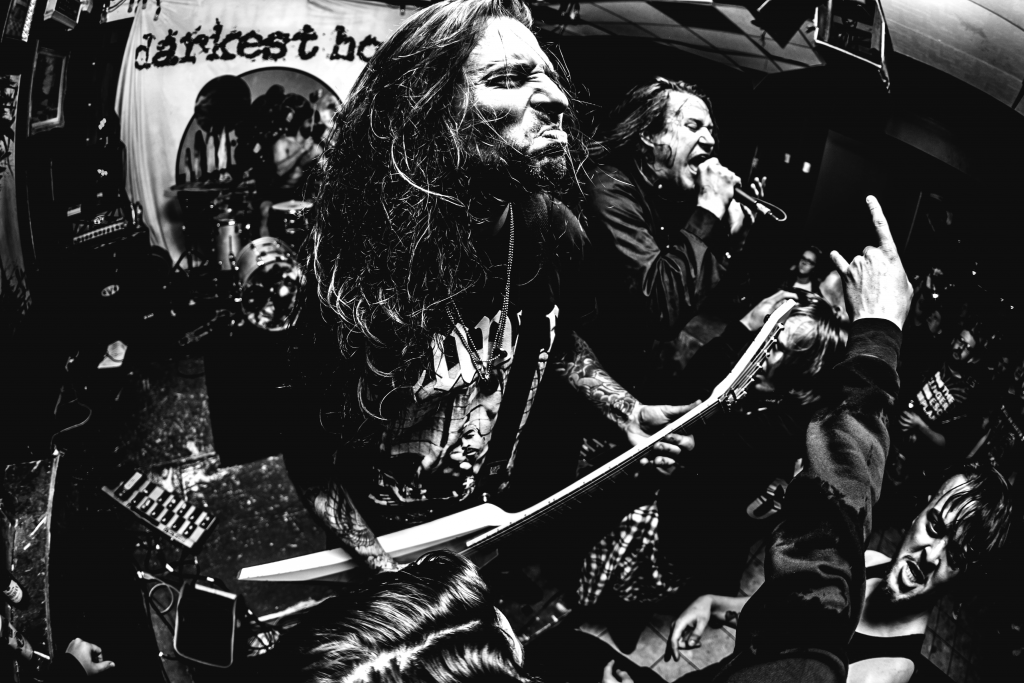
Harsh Quality Never Goes Out of Style
Also taking a leaf or two from the SDM book, guitarist Mike Schleibaum of American melodic death metallers Darkest Hour says the HM-2 was the first pedal he owned. It helped him achieve a perfect distorted tone: his primary goal as a guitar player. “I think that the overall sweep of the HM-2 allows it to be very versatile, not only in terms of EQ but also gain,” Schleibaum explains. “While many people like myself use it as more of a blending tool, others tend to stretch the pedal to the extreme and celebrate its harsher qualities, effectively pushing its unique tonal aspects to the forefront.”
For Schleibaum, there are some visceral qualities to the pedal as well. “The end result is a stompbox that has attitude and screams the word ‘raw.’ Also, you can’t overlook the fact that it says ‘Heavy Metal’ right on it,” he laughs. “While other manufacturers choose to market their gear in a way that’s almost genre un-specific, the HM-2 knows exactly what it is. This is its true victory. The sound of the HM-2 will never go out of style.”
